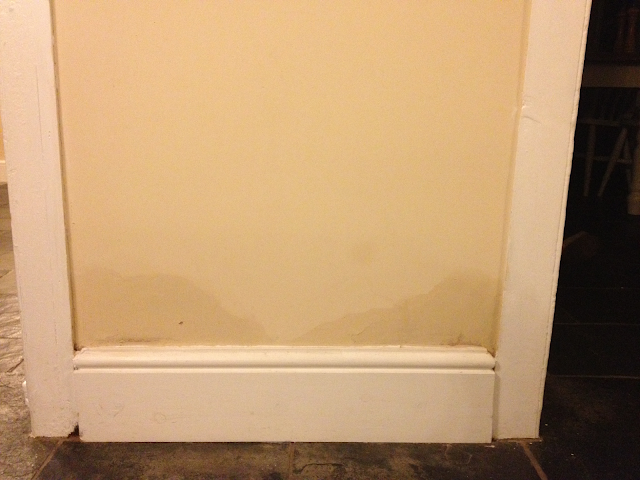Hi there
I have an ongoing battle with damp patches on the bottom of both sides of an interior wall.
Got an independent surveyor in, who thought most likely caused by condensation due to the house being unoccupied for a long while and lack of ventilation etc. I also noticed staining at the top of the wall where the bath is (bathroom is above the wall) and there was damp underneath the bath itself due to leaky pipes. Bathroom has since been replaced etc. and no new staining has appeared.
When the old wallpaper was stripped off there was dark sticky stuff on the plaster that corresponded with the damp patches. This came off easily. Hung lining paper. All seemed well, no damp patches visible. But as soon as the lining paper was painted, damp patches came through.
Sometimes the patches dry out and fade or vanish, but they always reappear. I wondered if it would be worth trying an anti damp paint/foil wallpaper on the walls or whether these are a waste of time? Would it be best to get the old plaster hacked off and replaster with a suitable plaster?
Thanks in advance for any advice!
I have an ongoing battle with damp patches on the bottom of both sides of an interior wall.
Got an independent surveyor in, who thought most likely caused by condensation due to the house being unoccupied for a long while and lack of ventilation etc. I also noticed staining at the top of the wall where the bath is (bathroom is above the wall) and there was damp underneath the bath itself due to leaky pipes. Bathroom has since been replaced etc. and no new staining has appeared.
When the old wallpaper was stripped off there was dark sticky stuff on the plaster that corresponded with the damp patches. This came off easily. Hung lining paper. All seemed well, no damp patches visible. But as soon as the lining paper was painted, damp patches came through.
Sometimes the patches dry out and fade or vanish, but they always reappear. I wondered if it would be worth trying an anti damp paint/foil wallpaper on the walls or whether these are a waste of time? Would it be best to get the old plaster hacked off and replaster with a suitable plaster?
Thanks in advance for any advice!


